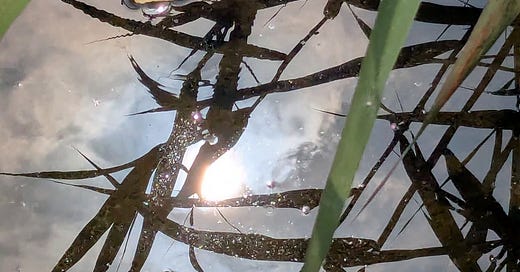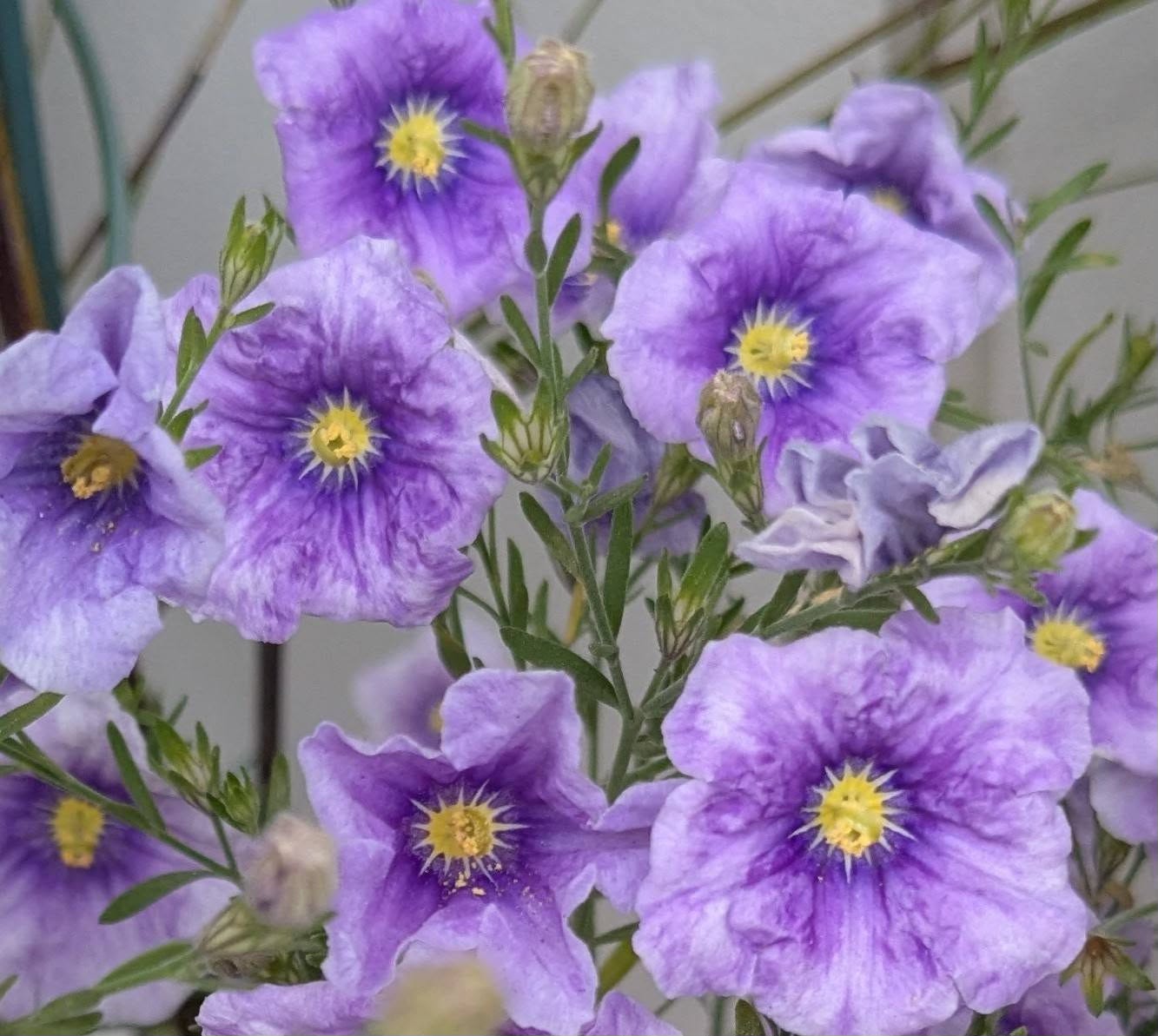Recently I traveled to Seoul, Korea. There was all the excitement of going to a country in a part of the world that I had never been to before. New sights, new sounds, new food. At the same time, I was going to be in a city whose population is greater than that of the state I live in. As someone with social anxiety, being surrounded by this many people brought with it great unease in me. Before I left home, I realized that I would need to find moments during all of this seeing and doing to just be. Not go anywhere but sit and observe, to spend time noticing the small things.
I took with me a small floral journal and a paperback The Selected Poems of Emily Dickinson. Approaching this trip, I took with me her words, “That it will never come again is what makes life sweet. Dwell in possibility. Find ecstasy in life; the mere sense of living is joy enough.” Every where I went, I carried this collection of her poetry with me. Instead of Emily in Paris, it was Emily in Seoul. Each time I stopped in a park or sat down in a coffeeshop, I opened up her poems and read one. I also carried my small journal to jot down what I encountered, observed and heard.
I expected my journal to be of the big moments, recording all the great wonders I saw be it Gyeongbokgung Palace (meaning Palace Greatly Blessed By Heaven) but, instead, I found myself writing about the young school children playing in water near the fountain of King Sejong the Great, who is reported to have created Hangul (the Korean alphabet that forms their language). The children’s delight and joy in something so simple as playing in water, while their teachers watched with smiles, was infectious. It was a reminder that all children are the same and that play is necessary and vital. Yet how many others noticed this wonderful scene?
Every morning, the sunlight would come through the blinds on the windows of the room of the AirBNB I was staying in. I would sit up, put on my glasses and read a poem to begin my day in beauty. After I dressed, I would take a walk around the quiet neighborhood where I was staying. I would listen to the sounds of the Brown-eared Bulbul or the Oriental Magpie. I would stop to admire the camellias and roses in bloom. I would hear the sounds of children playing on the playground over the wall. I would pause to watch an older woman who worked in a laundry. She would sew on a mechanical sewing machine that required her to press down on the treadle with her foot to power it. Or she would iron clothes and the smoke of the steam from the iron would rise into the air.
There was an old man who went out every morning with his cart to collect cardboard boxes around the area, which he would use to get Won to survive. One day, some boxes fell off his cart as I was passing him, so I stopped and helped him put them back on the cart. “Gamsahabnida,” he nodded (Thank you). “Cheonman-eyo,” I replied (You’re weclome) and nodded back. We both smiled. After that, whenever we would see each other, we would bow and greet each other with, “Annyeonghaseyo” (Hello). This old man goes unseen throughout the city. He is old and poor. Just a simple act of helping him formed a connection between us. Now we were no longer strangers but friends.
There’s a Buddhist saying, “If we could see the miracle of a single flower, clearly our whole life would change.” To me this is all about attention, giving something your undivided focus. I began with noticing flowers. The roses that hung over walls, the potted flowers outside of businesses, fields of poppies, or the Dwarf Cupflowers that looked as if they were straight out of an Impressionist’s painting.
To truly see another is to draw out of oneself and give of oneself wholly to that person, that flower, that tree, that cloud, that painting, that piece of music, that poem, that conversation. It is a spiritual act.
My favorite moments were just such moments of quiet attention.
Sitting in a park, shaded by the ginkgo tree and watching a young mother feed her little daughter kimbap from a convenience store using chopsticks. The love between them in this simple act. The daughter hugging the mother and the mother kissing her daughter’s head.
Of noticing white petals on a path that had fallen from the Kousa Dogwood. Ducklings following their mother in a stream between two paths.
Sitting in a cafe, watching raindrops on the leaves of a gingko tree.
Stopping to admire the flowers of a Japanese False Bindweed. Two white cabbage butterflies dancing around each other as if they were lovers in a painting by Chagall.
Eating a soft bun full of custard while gazing at the nearby river and mountains.
Finding a collection of Korean poetry translated into English in a second-hand bookshop. Opening it up to read these words:
People amble in this direction under the trees Beauty thrives in their movements! All movement - what beauty - especially the grace of trees.
Though I had never heard of the poet, Chong Hymn-jong, I purchase the book entitled Day-Shine. He joined Dickinson as part of my daily routine.
Sometimes I read poetry beneath the light filtered through the leaves of the Japanese Maple Tree. I glance up to see a teacher leading her young students, all preschool age, down the sidewalk. The children are all wearing their yellow vests.
In a nearby stream, a grey heron slowly moves through a stream.
Often I sit in the shade by the water of the stream and drink my tea. Large carp move past at a leisurely pace. A drake and a mallard fly past. I spot two Great Cormorants nesting.
A white butterfly lands on a lance leaf coreopsis.
Even on crowded subways, I watch the people who get on and off the subway car. Each on their smart phones. Some smile at what they are looking at. Some sleep. I gaze at them with no less tenderness than I do the flowers I gaze upon. Each person is a magnificently complex universe all together in this one space, in this exact time and there are the a mix of the lonely and in love, those who are going through a wondrous part of their lives and some who may be just trying to get through the day.
Some mornings, I stand outside where I’m staying and watch an old man sweeping with a besom, which resembles a bundle of twigs. One day he is sweeping shattered glass that was in the road. A young man stands outside, smoking a cigarette and talking on his phone.
When we visited the city of Gyeongju, the oldest city in Korea at over a thousand years old, we visited a Buddhist temple. While it was beautiful, it was crowded and very touristy. Lots of folks taking selfies in front of the buildings and the statues. I found solace in the shadows on some moss, a small unnoticed purple flower, sunlight through the trees, shadows beneath the brightly colored paper sky lanterns, the stillness of a pond. Some female Buddhist monks, one of whom is asleep. Touching the cracked bark of a gnarled old tree. A crane in a river.
Later, outside a restaurant, a man bends down to gingerly and tenderly tend to his plants. The delicate care he takes with them feels more holy than the Buddhist temple streaming with tourists snapping photos or buying the souvenirs at a stand just beside the temple’s entrance.
Every day that I was there, and even after I’d returned home, I saw a white butterfly. In Buddhism, white butterflies are associated with the soul of the deceased. It represents new life and hope. Each time I spotted one, I wondered what the universe was trying to tell me?
One lands on the bloom of a Mugunghwa, which is Korea’s national flower, and whose name means, “eternal blossom that never fades.”
Throughout my trip, I did not allow myself to fall prey to the distractions of my smart phone. Instead, I remained present to the world that was around me. I was present to a single flower and drank in its beauty and felt connected to it. Or to the squid and octopus and fish that filled tanks of the local markets. Or the sellers behind the counters of stalls selling their wares or food. Watching a child drink her banana milk from a small, yellow plastic bottle. Stopping to observe two old men playing a game of Go on a plastic table outside a convenience store one night.
Each day was filled with noticing the preciousness and uniqueness of every moment because it will not be repeated. Each moment fleeting and in its brevity is its value. As Emily Dickinson wrote, “Forever is composed of Nows.” This is something I took with me to Korea and brought back with me. I continue to focus on those small moments, which are not small, because they are what truly make up a life. Those acts of being mindful, being present. To put the phone down and actually live this life I am given - one glorious alive moment at a time.






Elliot, your reflections are written so eloquently. I felt as though I were there with you in each moment you described. You are an excellent writer, and I am happy to get to know the wonderful human you are through your writing. Thank you! Nan
Lovely, everyday miracles are all around. My favorite form of writing, 💞